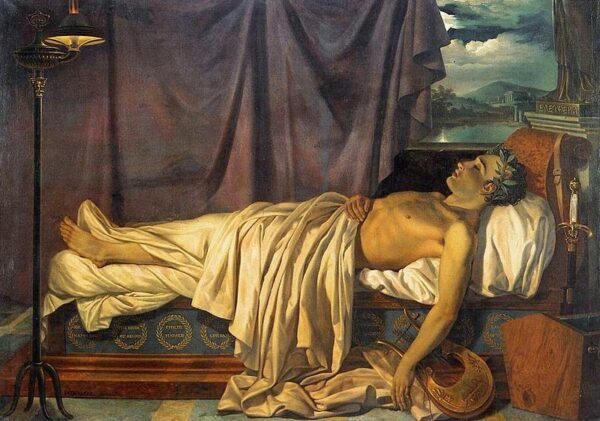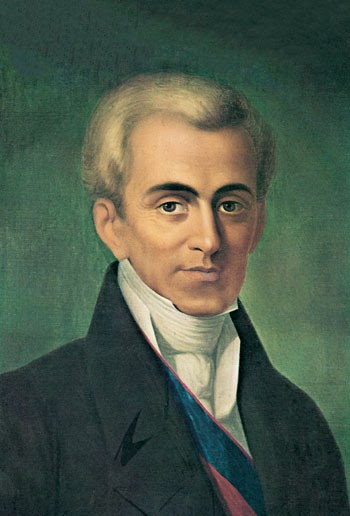Greek Independence Day – 25 March – History and Traditions

Greek Independence Day 25 March
On the 25th of March (in Greece, a national holiday, established in 1838 with a Royal Decree by King Otto’s government), Greece, along with Greeks all over the world, will be celebrating the yearly commemoration of The Greek War of Independence, which began in 1821.
The Annunciation to the Theotokos
The 25th of March is a double celebration as it is also, in the Greek Orthodox Church, the Annunciation to the Theotokos, when the Archangel Gabriel appeared before the Virgin Mary to inform her that she would bear the son of God.
The twenty fifth of March falls exactly nine months before Christmas.

Fra Angelico. The Annunciation
The Greek War of Independence 1821

Theodoros Vryzakis – The Oath-taking in the Church of Aghia Lavra 1851. The historical composition represents the legendary declaration of the Greek War of Independence on 25 March 1821 in Kalavryta, Peloponnese.
Greece had been part of the Ottoman Empire for nearly 400 years, since 1453 and in order to keep the Greeks under control in inaccessible, mountainous regions often inhabited by “Klephts”, (Thief or brigand, warlike mountain-folk) the “Armatolikia” were created.
With the outbreak of the Greek War of Independence, a large number of “Armatoloi” abandoned any allegiance to the Ottomans and formed Greek land forces.

Armatolos Théodore Leblanc (1800? – 1837)
Theodoros Kolokotronis, a Greek general, gathered up a gang of the toughest armatoloi and formed a sort of irregular army which he led against the Ottomans.
Kolokotronis; archistrategos – commander-in-chief of the army, who was fifty years old at the time, became known as “O Geros tou Morea” – The Elder of Morea, another word for the Peloponnese, was one of the most notable heroes of the Greek revolution.

Theodoros Kolokotronis, leader of the Greek army in The Greek Revolution of 1821
These forces; known as palikaria, were the only real threat to the Ottomans.
Four of the most famous “Armatoloi”, or “Palikaria”, initially employed by Ali Pasha (Ottomans), who rebelled and fought for Greece in the Revolution are: Markos Botsaris, Georgios Karaiskakis, Odysseas Androutsos and Athanasios Diakos.
The Greeks, helped by Europe, who were sympathetic towards Greece, because of the contribution of so much of their culture to the western world, revolted against Ottoman rule.
The Filiki Eteria, a secret nineteenth century organization, the purpose of which was to overthrow the Ottomans, initiated the Greek revolution, lead by Alexander Ypsilantis, in the spring of 1821.

Alexander Hypsilantis. (1792 – 1828). National Historical Museum of Greece
The motto for Greece, Freedom or Death, Eleftheria i thanatos (Ελευθερία ή θάνατος) arose during the War of Independence.
It is still in use today, and is a popular theory regarding the use of 9 stripes (for the nine syllables of the motto) in the Greek flag.
The Filiki Eteria at its emblem had the letters “ΗΕΑ” and “ΗΘΣ”.
These are the letters of the words “Ή ΕλευθερίΑ” “Ή ΘάνατοΣ”, which means Freedom or Death.
This is alsothe motto of the IV Infantry Division of the Greek army.

Emblem of Filiki Eteria
Fighting for Greece, along with so many great Greek soldiers, was Lord Byron, a poet, one of the major British romantics.

Portrait of Lord Byron – Benaki Museum of Greek Civilization
Byron, “Mad, bad and dangerous to know” was known and respected by the Greeks, for his love of Greece, he once said;
“If I am a poet, the air of Greece has made me one”
His poem “Curse of Minerva” was written as an attack against Lord Elgin, for stealing the Parthenon Marbles, which had caused Byron much sorrow.
During his involvement in the Greek Revolution, he formed “The Byron Brigade”, becoming the head of the Greek rebels; he even used his own money to finance the war.
After his death in 1824, aged only thirty six, he was buried as a Greek hero, with three days of official mourning.

Lord Byron on his deathbed Joseph Dionysius Odevaere
After nine long and brutal years of war, the Greeks triumphed over the Ottomans.
Greece was finally recognized as an independent state; the First Hellenic Republic, governed by Ioannis Kapodistrias.

Ioannis Kapodistrias. First head of independent Greece
Under the London Protocol of February 1830 and with the Treaty of Constantinople in 1832, borders of the new state and Otto of Bavaria, who, after the assassination of Kapodistrias on 27 September 1831, became king, were recognized.

Otto of Bavaria. First King of Greece
All kings after Otto were called King of Hellas.
The last King of Greece, after a referendum in 1973 abolished the Greek monarchy, was Constantine II.

Last King of Hellas. Konstantine II
The Greek 25th of March Parade
From the largest towns to the smallest villages, this day is celebrated with parades, for which preparations and rehearsals have been in full swing for days beforehand.
The children, are especially excited, they get to dress up!
Mothers have frantically been gathering together, Greek traditional outfits for the girls and tsaroukia (the shoes worn by the tsoliades), foustanellas (the skirts worn by the tsoliades) and the red fez, for the boys.

My son, Yiannis, 25 March 1987 – 5th from the front, with fez pulled well down!
You cannot imagine the time it takes to iron the foustanella; meters and meters of pleats!
I must have gone through preparations for this day, with my two children for about twelve years or more!
How proud I was though when I saw them marching through the streets with their school friends and how proud they all looked; proud to be Greek.

My daughterer Nais, front, leading her class 25 March 1990.
Once the parade is over, the tradition, is to hotfoot it to the nearest taverna for the traditional salt cod (Bacaliaro) and garlic sauce (Skordalia), always eaten on the twenty fifth of March.

Salt cod, traditionally eaten in Greece 25 March
Salt cod is eaten as it is now lent, no meat allowed, the salted type is it was used as years ago, before the age of the deep freeze, it was difficult for inland towns and villages to get hold of fresh fish and even if they managed to, they had no way of keeping it from going off!
The phrase on everyone’s lips today will be:
Zito Hellas, Long live Greece.
Read all about Greece’s other major parade day here:



